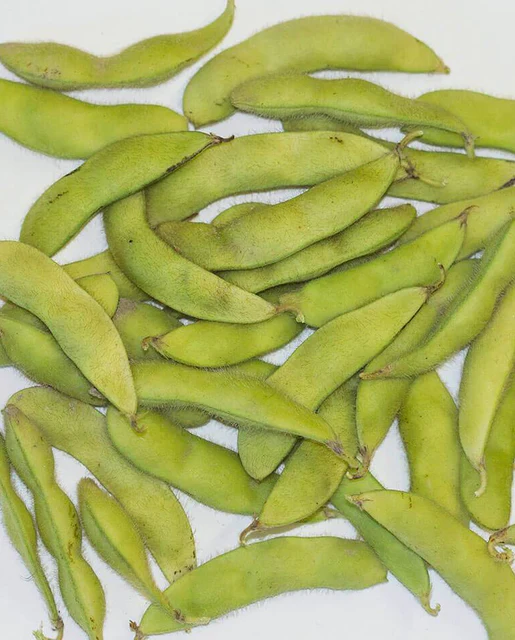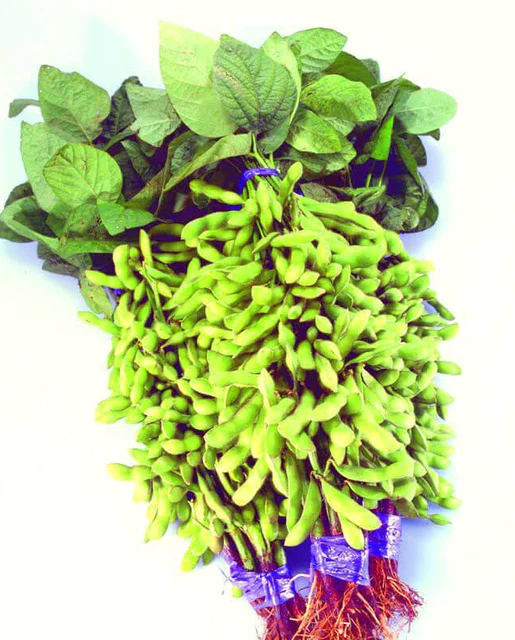For Product Registration and general enquires please contact us
Kuroshinju Edamame
$17.99 – $259.99
This early maturing soya bean’s seeds turn black when fully cooked and are rich in antioxidants. It has a silkier texture, and sweeter flavour than many other varieties.
West Coast Seeds ships anywhere in North America. However, we are not able to ship garlic, potatoes, asparagus crowns, bulbs, onion sets, Mason bee cocoons, or nematodes outside of Canada. We regret, we cannot accept returns or damages for orders outside of Canada. The minimum shipping charge to the US is $9.99.
Description
More details about Kuroshinju Edamame
This early maturing soya bean’s seeds turn black when fully cooked and are rich in antioxidants. It has a silkier texture, and sweeter flavour than many other varieties. The bushy 60cm (24”) tall plants were very productive in our trials, producing pods with two to three seeds each, that are held aloft for easy harvest. The pods keep fresh for ages if briefly blanched and then frozen. Our soybean seeds are authentic from Japanese breeding and are non-GMO. Soybeans are easy to grow, easy to harvest, and nutritious to eat.
Matures in 80-85 days. (Open-pollinated seeds)-
- Early maturing
- AKA Black Pearl
- Very productive
- High in antioxidants
- Matures in 80-85 days
All About Kuroshinju Edamame
How to Grow Soya Beans

Step 1: Timing
Direct sow in late spring, once the soil has warmed up. Cold, damp soil can result in rotted seeds and poor germination. Optimal soil temperature: 21-32°C (70-90°F).
Step 2: Starting
Do not pre-soak soya bean seeds. Sow seeds 2-5cm (1-2″) deep, 5-10cm (2-4″) apart, in rows 60cm (24″) apart. If the weather is too wet, seeds can be started indoors in pots and carefully transplanted a few weeks later. For a longer harvest, plant at 3 week intervals. Germination takes 8-16 days, depending on conditions.
Step 3: Growing
Ideal pH: 5.8-6.2. Well drained, warm soil is best. Raised beds help with both drainage and warmth. Use 1 cup of balanced organic fertilizer for every 3m (10′) of row. Too much nitrogen in fertilizer or manure is often the cause of poor pod set and delayed maturity. If beans flower but do not set pods, the cause can be zinc deficiency. Try spraying the plants with kelp based fertilizer.
Step 4: Germination
Days to maturity: From direct sowing. In optimal conditions at least 85% of seeds will germinate. Usual seed life: 3 years. Per 100′ row: 800 seeds, per acre: 174M seeds.
Step 5: Harvest
Pick pods that are in the middle of the plant as soon as they start to fatten up. By mid-September, you can pull up the whole plant and pick the remaining pods at your leisure.
Tips!
• Wet leaves on crowded plants are subject to diseases. Thin plants to increase air circulation and avoid touching the leaves while they are wet. • Edamame is the word used to describe the whole pods, which have been steamed or boiled, and optionally salted. The green vegetable soybeans freeze well after blanching. Companion Planting: Good for fixing nitrogen and acting as a mulch against weeds. Grow soya beans with corn. Soya beans repel Japanese beetles and chinch bugs.Additional information
| Matures | in 80-85 days |
|---|---|
| Season | Warm season |
| Exposure | Full-sun |
| Quantity | 15g, 25g, 75g, 250g, 1kg |
You must be logged in to post a review.










Reviews
There are no reviews yet.